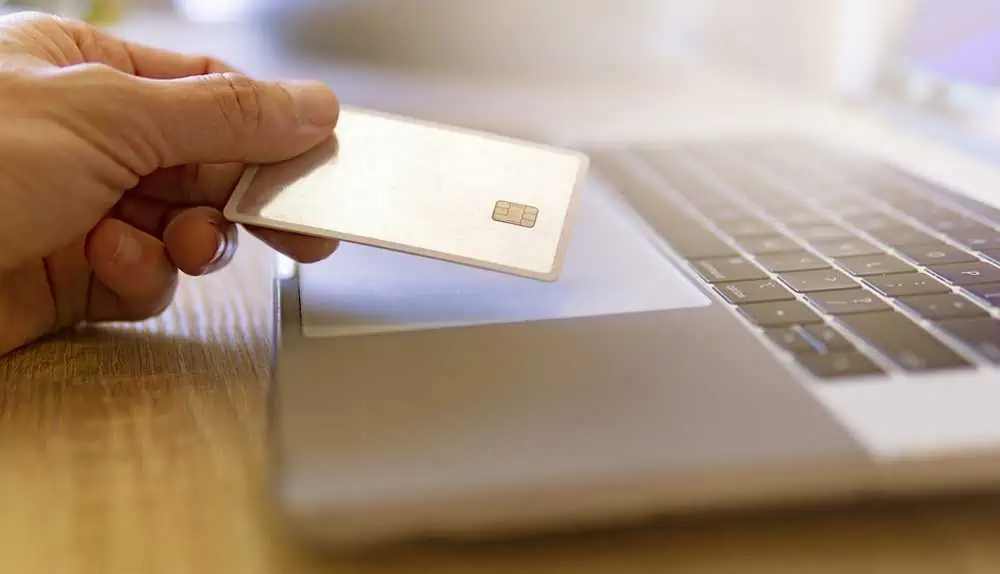Accepting payment options other than cash and having the ability to process those payments is an absolute must in today’s business environment. Luckily, there are many ways to process payments in 2023. As more and more businesses have embraced the acceptance of non-cash payments, technological advancements and competitive forces in the payments industry have made the process affordable, seamless, and accompanied by many other tertiary benefits.
Over the past couple of years, the ways to process payments have multiplied as consumers have shifted towards touchless means of buying and paying. Benefits such as not using a physical wallet to pay for something or paying much more quickly with a card or your phone have introduced consumers to non-cash transactions, and the habits they have spawned are impossible to reverse.
As a result, we have many ways to process payments in 2023. Increasingly, technology has enabled speedy, secure and seamless payment processing. Below we look at some of the top ways to process payments, such as point of sale terminals, mobile wallets, cloud payments, EMV cards, and real time payments.
Top Ways to Process Payments in 2023
Point of Sale Terminals
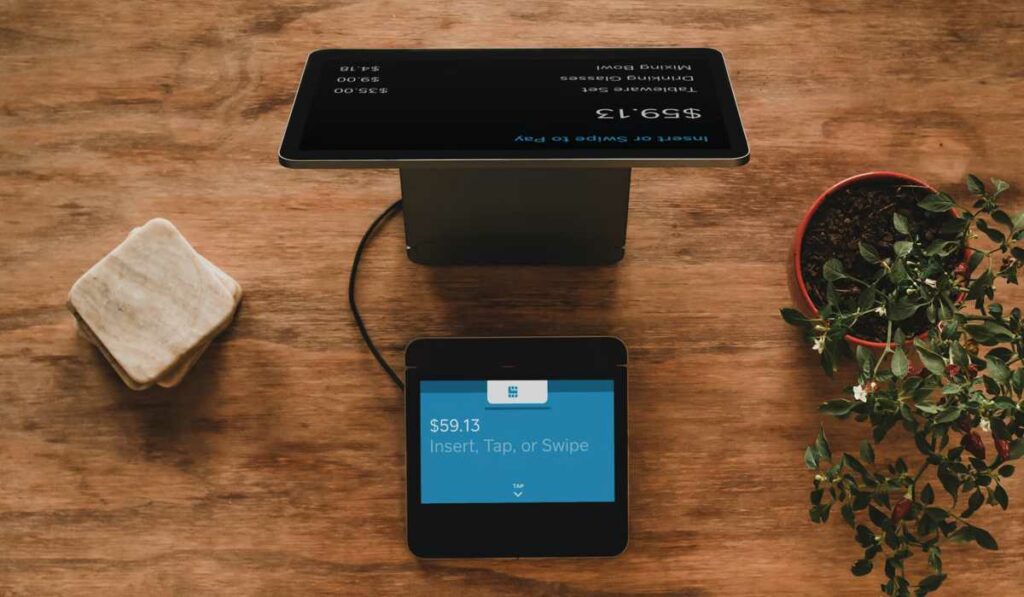
For most businesses, the main ways to process payments in 2023 is via point of sale terminals, also known as POS terminals. These are now very traditional methods of payments often found in all types of businesses, both small and large, and even used in kiosks and numerous other small mobile companies that operate on the go. A POS solution can include a stand-alone handheld wireless device or be available in various arrangements, including handheld devices, monitors, tablets, card readers, cash registers, and receipt printers.
Which combination a business chooses often depends on merchants’ needs; a food truck may only require a card reader that can connect to their phones to process payments. A restaurant may have multiple checkout registers and tablets for order-taking, which route orders to the kitchen’s screens, whose team can then communicate via their terminals once meals have been prepared.
Contactless payments
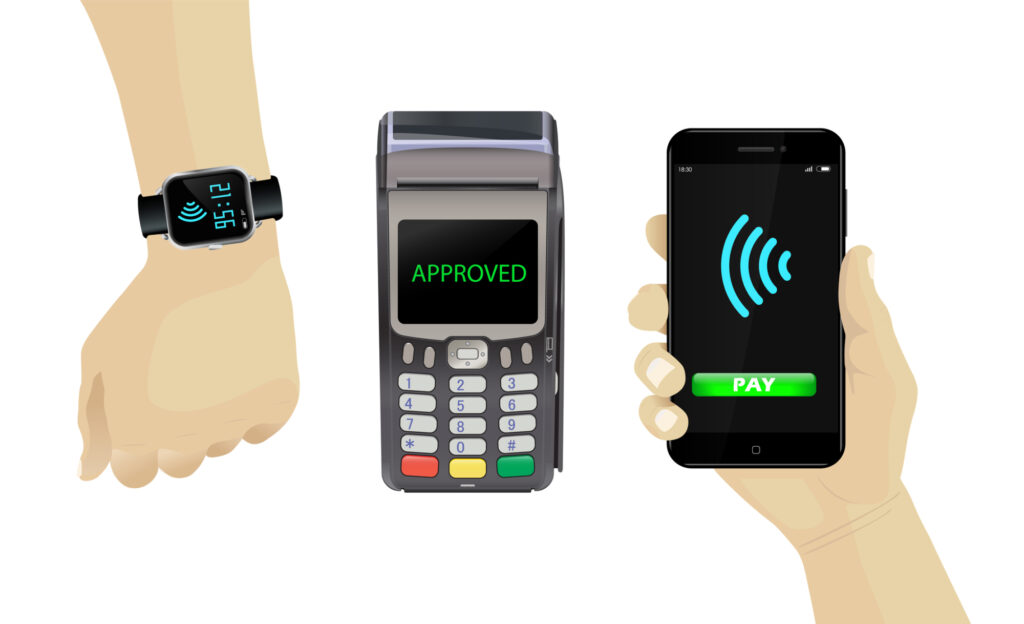
Contactless payments have gained a lot of traction over the past few years and is one of the newer ways to process payments in 2023. As more and more consumers shift their spending habits towards digital, one of the main ways they choose to pay is via contactless payments. There is a technological component involved in processing payments with this payment type. Nonetheless, the majority of the POS terminals and capable of processing such payments. From the consumer’s end, there are a couple of critical technologies to process contactless payments found on almost all mobile phones and tablets today, hence the mass adoption by consumers since a device they already carry around, their smartphone, can now double as their wallet.
Near-field communication (NFC) – included in all the latest smartphones and tablets, NFC allows customers to simply swipe their mobile device in front of a POS terminal. The payment is processed in a matter of microseconds as the encrypted data is transferred from the phone to the terminal.
Payment by QR Code – with this technology, customers simply use their app that scans a given QR code at checkout, resulting in processing payments for transactions.
The Mobile Wallet Option
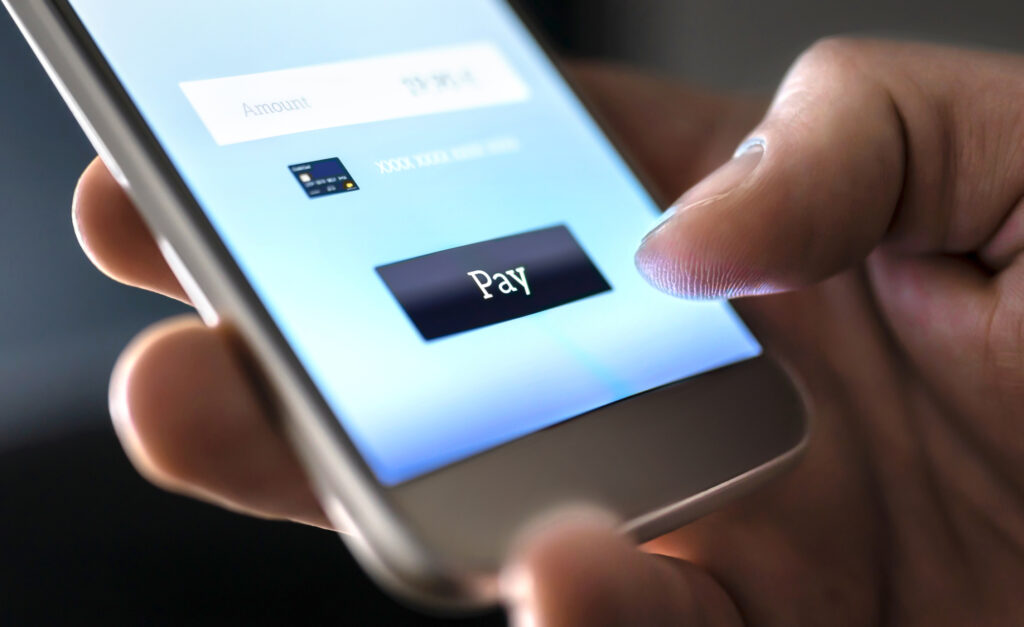
Paying via a mobile wallet is one of the best many ways to process payments in 2023. With the smartphone being such an integral part of consumers’ daily life, it is only a matter of time before the smartphone becomes a replacement for a physical wallet for users. Dubbed the mobile wallet, smartphones have been taking up more and more of the tasks of numerous other personal gadgets. We used to need physical maps, cameras, and video recorders when traveling. The cool crowd had their Walkman and Gameboys, and there were also mundane items such as calculators, flashlights, newspapers, books, a watch, and even a stopwatch. Today, the smartphone combines all of that into a single device.
Slowly, it became acceptable to use your smartphone as identification, board planes and buses, or be used anywhere that required a ticket. Now, slowly but surely, the consumer is pivoting to the smartphone to pay for things.
Mobile wallets, also called digital wallets, are a catch-all phrase that combines many different options to pay for a transaction. Almost every bank and credit card company now has its own app that users can download to their smartphones. There are also third-party apps that connect directly to consumers’ credit cards and bank accounts to draw money from them in the backend and use their own app to make purchases at the front end.
The underlying feature of a smartphone that turns it into a digital wallet is its ability to securely store various financial details on one device, which can then be used at the time of a transaction. Below are examples of how consumers use their smartphones as wallets to pay for purchases.
At a point of sale terminal – a smartphone uses the process of tokenization to transmit encrypted financial data stored on an app to a merchant’s point of sale terminal via the devices’ near-field communication sensors. After that, the regular course of payment processing begins as if a credit card or debit card was used to pay.
P2P transactions are the peer-to-peer transfer of funds completed by users of a common app. So, anyone with a Venmo or PayPal app can transfer funds to another person as long as that person has an account on that App. As a result, merchants process payments by setting up accounts and accepting payments on a slew of P2P apps such as Venmo, PayPal, CashApp, Apple Pay, Google Pay, Amazon Pay, and Facebook Pay, just to name a few.
Added security with EMV
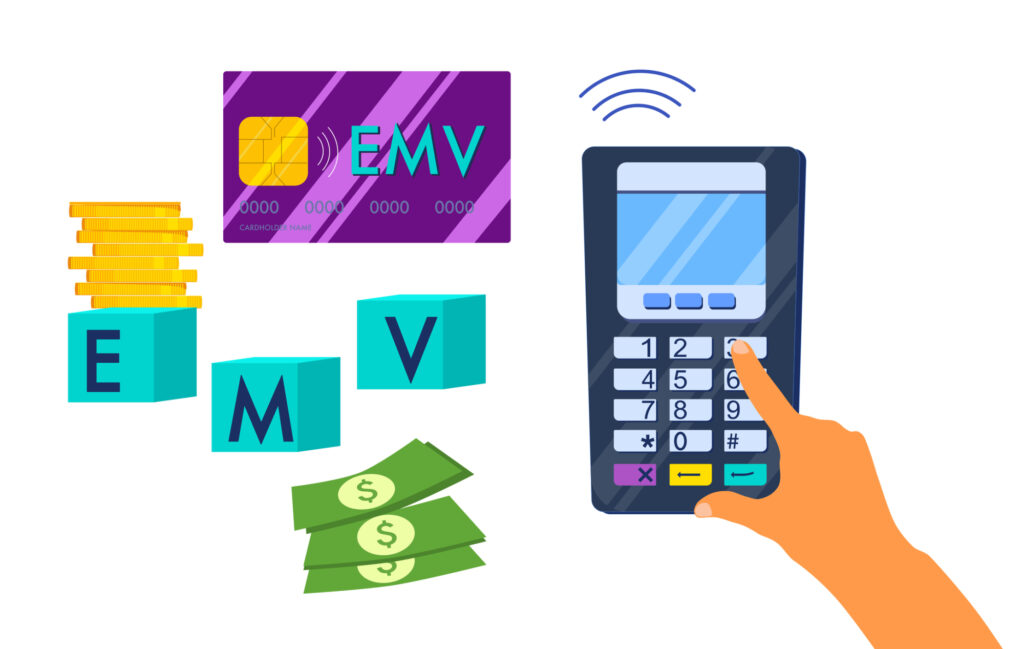
EMV credit cards are quickly catching on in usage in the US. Although the technology has long been the de facto standard outside of the US, it has just started gaining traction here. Built out of a nano computer, the EMV chip is embedded into a credit or debit card that stores the user’s encrypted data and is transmitted via a process of tokenization to the point of sale terminal to process a payment.
A significant driver of EMV card adoption is the unanimous liability shift guidelines outlined by the major card networks since 2015. The guidelines state that any claims stemming from fraudulent activity on transactions processed by merchants on a non-EMV-equipped point of sale terminal will be the responsibility of that merchant. As a result, EMV-equipped terminals are an absolute must-have for any merchant processing payments in 2023.
Cloud-Based Payments
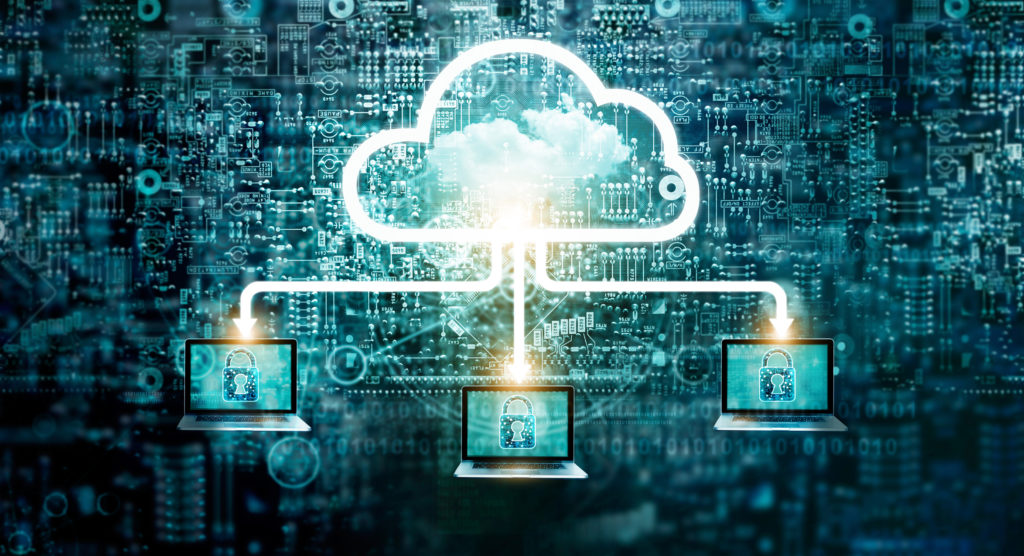
What started as a technological revolution has begun to impact the field of finance. It is indelibly leaving its mark on the payments industry. Cloud computing has been a growing solution for IT teams for over two decades. By 2023 cloud computing spending by users worldwide is forecast to touch nearly $600 billion, an increase of more than 20% from the prior year, according to Gartner[MF1] . This is even more pronounced since the world economic outlook is expected to slow down to 2.7% during that same time, according to the IMF[MF2] .
Cloud computing allows users to access their entire tech stack anywhere at any time, as long as there is internet connectivity. One of the mainstays of cloud computing is its self-service model that allows customers to scale operations up or down based on their specific tech needs.
Since its inception, the payments industry, with its first charge card, has continuously improved to offer a better, quicker, and safer alternative to transact. It was only natural for the industry to adopt the latest technology to deliver its service better to a growing market of end-users.
With cloud-based payments, merchants can process payments regardless of the physical infrastructure, i.e., a point of sale terminal. Businesses must ensure they have internet capabilities and can access their merchant services via an app or software. Any authorized user can access the service from any device, whether a point of sale terminal, a desktop, or a mobile device, at any time, from anywhere.
Cloud-based payments are part of an innovation wave within finance known as decentralized finance or DeFi. There has been a lot of hype and hysteria around blockchain and cryptography over the past few years; this is one of the few areas where practical use cases are starting to emerge.
Real-time payments
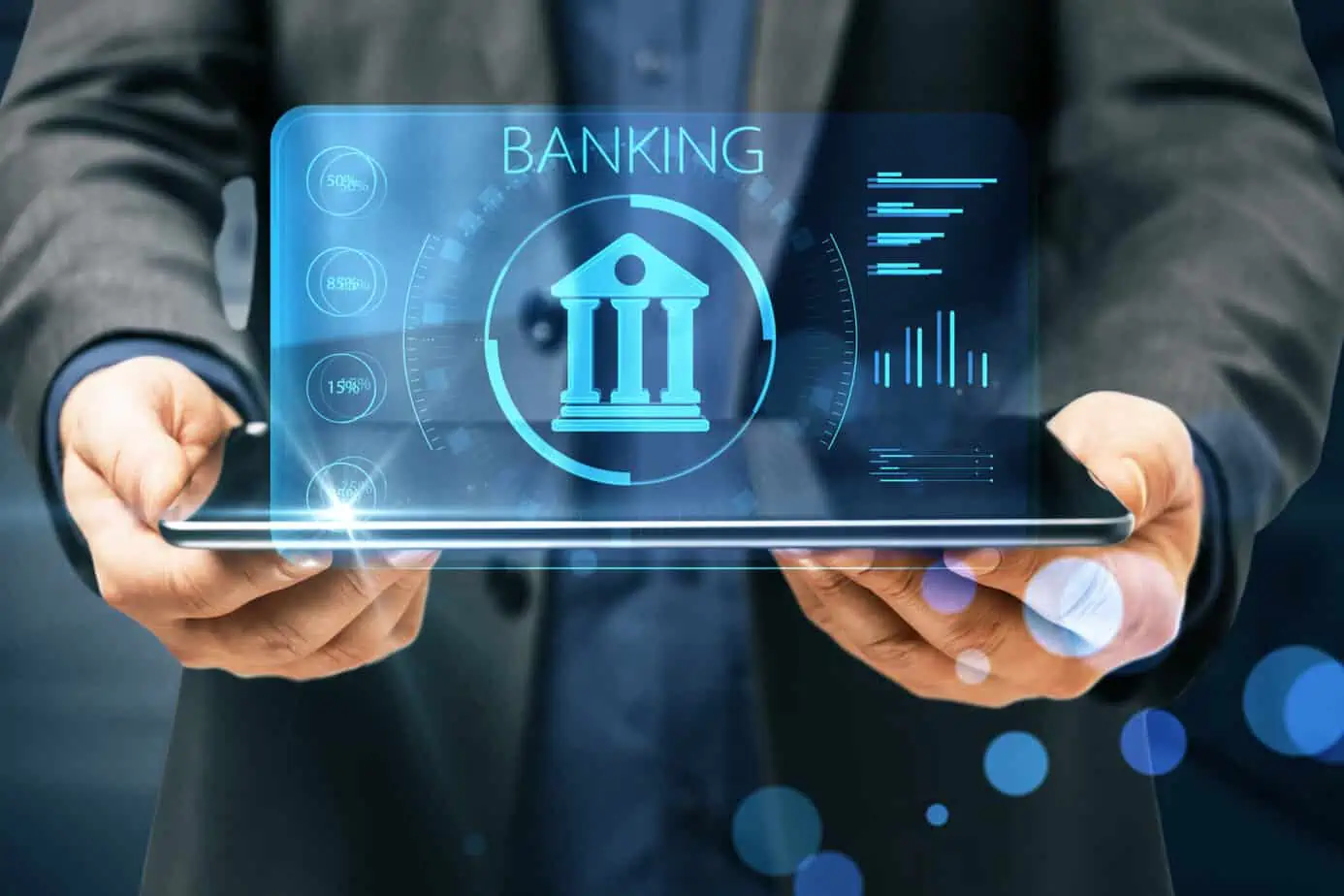
Decades of advancement and iterations on the shoulder of prior innovations have made payment processing the behemoth it is today. As a result, only about 18% of the global point of sale transactions are made with cash as of 2021, according to Insider Intelligence[MF3] . That number is expected to be reduced to about 10% by 2025. These trends did not emerge overnight. The payment industry worked for years to mitigate noncash payments’ friction and hassle. One area of focus has been the speed at which card and digital payments are processed and settled. With cash, settlement is instantaneous, and the merchant has the money in hand at the very moment goods or services are sold.
With payment processing, it took almost three days for the payment to settle and for the funds to hit the merchant’s bank account. Automated Clearing House (ACH) has made great strides in reducing the settlement time, bringing it down to one day. But that still isn’t instantaneous like cash. Some initiatives by many payment processors offer a tertiary service to merchants offering to pay out a certain percentage of total daily revenue the same day. This is an additional service known as Same Day Funding and is provided at a fee, accompanied by a level of due diligence the equivalent of a loan contract by the payor.
However, the US Federal Reserve is making real advancements in this space with its FedNow program. Announced in 2019 with an expected launch date in 2023, over 200 banks, financial institutions, and FinTech firms are participating in the pilot program setting up the rails for the country’s first real time payments program.
Once online, the program is expected to operate 24 hours a day, seven days a week, 365 days a year, including holidays. The FedNow program will allow merchants and consumers to transact anytime, clearing the payment and settling funds immediately.
Other considerations to be mindful of for payment processing in 2023
Merchants must keep a finger on the pulse of the latest payment processing methods to understand where consumers’ preferences are headed to avoid losing sales by being behind the curve. However, there are other considerations that merchants need to be mindful of.
The merchant service provider a business decides to work with is critical. What type of customer support is available by that payment processor? Is the service provider capable of handling all the latest payment technologies? Do they offer all the pertinent POS terminals? Are they sold for a one-time cost or leased? What are the contract terms of their services, tertiary products, and their third-party integrations? These are all important considerations that all merchants need to be mindful of, along with the latest ways to process payments in 2023.
Conclusion
The various ways to process payments in 2023 have expanded tremendously. The industry has achieved new heights of technological innovation for over seven decades to become the colossal global payment network connecting billions of consumers and merchants and processing trillions of transactions.
It started with the concept of a charge card after an entrepreneur left his wallet at home one night in the late ‘40s. It kicked off a new era of payments via card networks throughout the country. The ’60s brought about more organizations and the banking and financial services industry collaborating to develop the industry further.
The ’70s transformed those local industry networks into global initiatives. During the ’80s, it was the era of the point of sale terminal, which started becoming wireless during the 90s internet boom. All that infrastructure buildout facilitated the expansion of eCommerce during the 2000s that further transformed into mobile apps during the last decade. Today we are at the forefront of cloud-based payments processed in real time. These are all different ways to process payments today and help merchants grow their businesses in 2023 and beyond.

